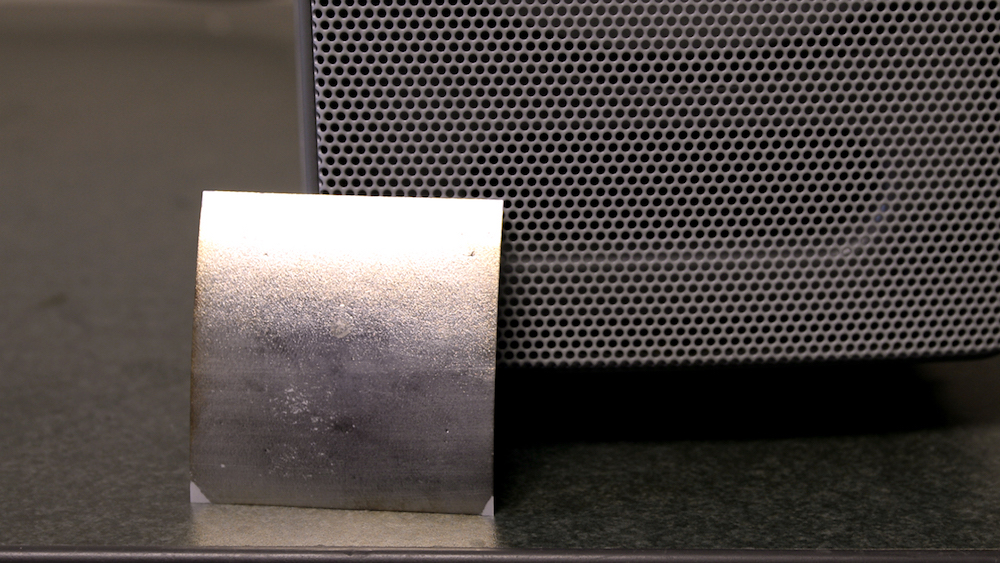Ultrathin Loudspeaker-Mic Also Generates Energy from Motion

Printed newspapers may be going out of style, but what if you could have a flexible electronic paper that reads headlines or the weather report and skips to the sports section on voice command?
Researchers at Michigan State University have developed a sheet-like device — known as a ferroelectret nanogenerator, or FENG — that acts as a loudspeaker and microphone and can generate energy from human motion, such as swiping a finger across a screen. [Top 10 Inventions that Changed the World]
"It's a device that you can roll up and put in your pocket and then get somewhere and unroll and put it on a screen or a window or any platform and use it as a both a microphone and loudspeaker," said Nelson Sepulveda, an associate professor of electrical and computer engineering at Michigan State University, and the primary investigator of the new study published online May 16 in the journal Nature Communications.
Last December, Sepulveda and his team detailed the main component of this device, the FENG, in the journal Nano Energy. At that time, the researchers showed off the thin film's ability to generate power from motion. It had the added benefit of being able to exponentially increase its voltage every time it was folded, the scientists said.
This latest research builds on that capability. The device now works as a microphone, picking up vibrations in the air (in other words, sound waves) and converting them into electric energy. It also turns electrical signals, from a computer file, for example, into vibrations that people can hear as sound.
In a couple of different demonstrations, the scientists showed how it could work. They embedded the FENG into the university's Spartan flag and then played the school's fight song through it. They also showed it could work as part of a voice-recognition system to authenticate access to a computer.
"The fidelity and the quality of the sound recognition is high enough to recognize the pitches and the frequency components of an individual's voice," Sepulveda told Live Science.
Sign up for the Live Science daily newsletter now
Get the world’s most fascinating discoveries delivered straight to your inbox.
The device's microphone feature works in a way similar to high-end microphones already on the market. These rely on crystalline components, called piezoelectric transducers, that pick up sound and convert it to electrical signals that a computer can then turn into audio.
Piezoelectric crystals work this way in part because of their atomic structure, which contains pairs of positive and negative charges, called dipoles. As sound waves bounce off the crystal, they cause the positive and negative charges to align and misalign — and that creates a signal.
Sepulveda and his colleagues were able to mimic this structure in the FENG, but with much larger dipoles.
The device is made of very thin layers of environmentally friendly substances, including silver, polyimide and polypropylene ferroelectret. Positively and negatively charged particles are added to the layers, which are stacked in an uneven way. The unevenness creates microscopic pockets of air between the layers that are analogous to the dipoles in piezoelectric crystals, the researchers said. As sound waves bounce off the pockets of air, they compress the hollow dipoles, causing the positive and negative charges to align and misalign.
"We are generating the same electrical output as the very expensive microphones that use brittle crystals," Sepulveda said.
The reverse is also true. An electric signal sent through the device can cause vibrations that produce sound.
Another potential application, Sepulveda said, would be as a noise-canceling device. For example, a person could mount the film on a window, where it would pick up street noise and play the opposite sound waves to dampen the noise.
"There are so many ideas, and we keep learning about the technology and learning its tricks every day," Sepulveda said.
Original article on Live Science.











